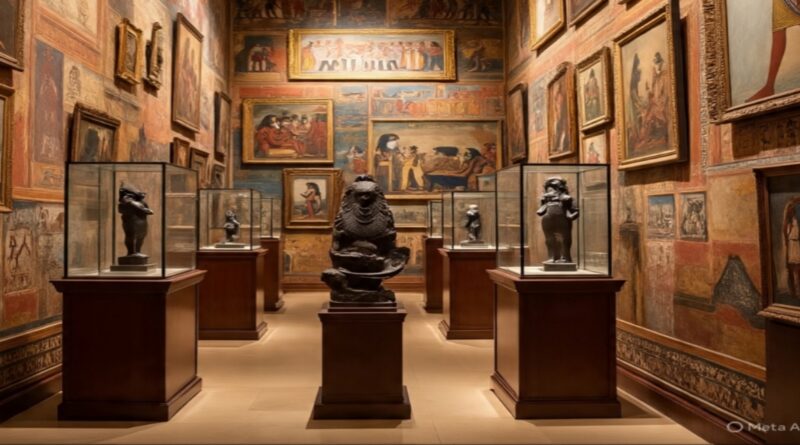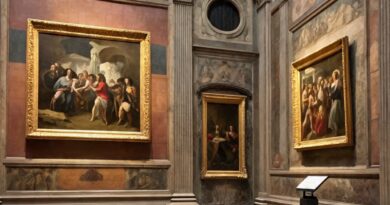The Evolution Of Cultiral Art Across Civilizations
Art has always been a reflection of who we are our beliefs, our struggles, and our triumphs. From the earliest cave paintings to the digital masterpieces of today, the evolution of cultural art across civilizations tells the story of human creativity, emotion, and identity. Every brushstroke, sculpture, and symbol has carried the essence of a people their history, their gods, and their dreams. Through art, humanity has recorded not just events, but emotions that words could never fully capture.
The Evolution of Cultural Art Across Civilizations: From Cave Walls to Clay Pots.
The earliest evidence of artistic expression dates back over 40,000 years. Primitive humans painted on cave walls, using natural pigments to depict hunting scenes and rituals. These ancient artworks found in places like Lascaux in France and Altamira in Spain represent the very roots of cultural communication.
As civilizations developed, so did their artistic expressions. In Mesopotamia, the cradle of civilization, art began to appear in pottery, seals, and carvings that told stories of gods and kings. Similarly, in ancient Egypt, art evolved as a spiritual language. The Egyptians used their artistic skills to decorate tombs, temples, and monuments, believing that these works would help guide souls in the afterlife.
Every brush and chisel marked progress each era adding layers of symbolism, meaning, and technique to the evolution of cultural art across civilizations.
The Evolution of Cultural Art Across Civilizations: The Greek and Roman Influence.
When we think about classical beauty and form, ancient Greece and Rome immediately come to mind. Greek artists introduced the idea of idealized human forms, proportion, and harmony values that would shape Western art for centuries. They celebrated the human body as a symbol of strength, divinity, and perfection.
The Romans, inspired by the Greeks, expanded on these ideas by adding realism and storytelling. Their frescoes, mosaics, and sculptures captured daily life, mythology, and power. The combination of Greek idealism and Roman realism became a foundation that influenced European art long after these empires fell.
This classical period was not just about aesthetics it represented a shift toward understanding humanity itself. The balance between realism and idealism would later inspire the Renaissance, continuing the evolution of cultural art across civilizations.
The Evolution of Cultural Art Across Civilizations: The Spirit of the East.
While Europe celebrated form and realism, the East developed its own distinct art traditions rich in philosophy and spirituality. In China, art was seen as a form of meditation and expression of harmony between man and nature. Calligraphy, ink paintings, and pottery reflected a deep connection to balance, flow, and simplicity.
In India, art took on a more symbolic and religious role. From the carvings of Hindu temples to the delicate paintings of Mughal courts, every piece reflected divine stories and cultural fusion. Japan, too, cultivated a minimalist approach from the tranquil strokes of Zen art to the vibrant world of Ukiyo-e woodblock prints that inspired Western artists like Van Gogh.
Through these forms, the evolution of cultural art across civilizations in Asia showed how creativity could merge beauty, faith, and philosophy into one.
The Evolution of Cultural Art Across Civilizations: The Islamic Golden Age and Beyond.
One of the most influential periods in art history emerged from the Islamic world. During the Islamic Golden Age, art became a celebration of divine beauty through geometry, symmetry, and calligraphy. Since depicting human forms was often discouraged, artists turned to intricate patterns, arabesques, and architecture creating some of the most breathtaking masterpieces in human history, such as the Alhambra, the Blue Mosque, and the Taj Mahal.
The Islamic art tradition influenced Europe through Spain and the Mediterranean, blending styles and inspiring generations of architects and designers. This cross-cultural exchange was another powerful moment in the evolution of cultural art across civilizations, showing how art transcends borders and beliefs.
The Evolution of Cultural Art Across Civilizations: Colonialism and Cultural Fusion.
As exploration and colonization spread across continents, so did cultural exchange both positive and painful. Art became a witness to this blending of worlds. African, Asian, and Native American art began influencing Western artists who were captivated by their forms, colors, and spiritual symbolism.
During this time, art was also used as a form of resistance and preservation. Indigenous communities used their traditional art to protect their identity, while colonizers often misunderstood or exploited it. Yet, out of this tension, new hybrid forms of expression emerged a testament to resilience and adaptation within the evolution of cultural art across civilizations.
The Evolution of Cultural Art Across Civilizations: The Modern and Digital Era.
The 19th and 20th centuries brought radical changes. Movements like Impressionism, Cubism, and Surrealism broke all traditional rules. Artists such as Picasso, Monet, and Dali began exploring emotion, perception, and imagination rather than perfection. Art became personal it no longer needed to please kings or gods; it needed to express truth.
In today’s world, digital technology has opened new frontiers. From digital painting and animation to NFT art and AI-generated pieces, creativity has entered a global, borderless space. Artists can now share their work instantly across the world, influencing cultures faster than ever before. The evolution of cultural art across civilizations has entered a phase where human creativity meets technology and the possibilities are limitless.
Conclusion: The Eternal Journey of Artistic Expression.
The story of art is the story of humanity itself. Every civilization, from ancient hunters to modern creators, has used art to define its identity and share its soul. The evolution of cultural art across civilizations reminds us that while tools and techniques may change, the purpose of art remains timeless to communicate, to inspire, and to connect us all.
Art isn’t just history on display, it’s a living, breathing dialogue between generations. As we continue to evolve, so too will our art forever capturing the essence of what it means to be human.



